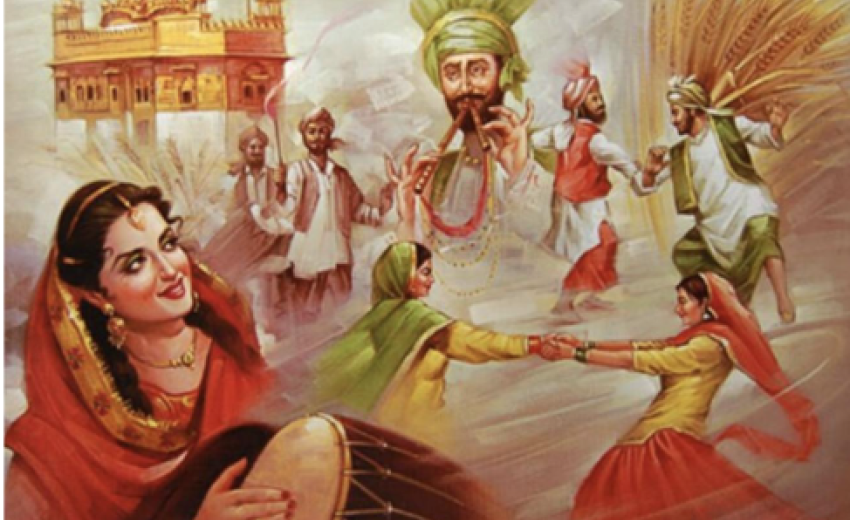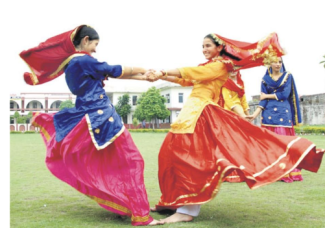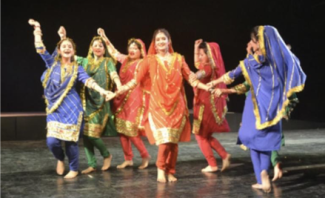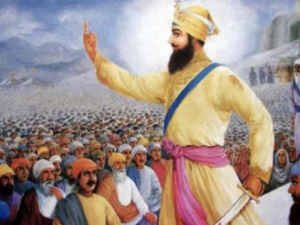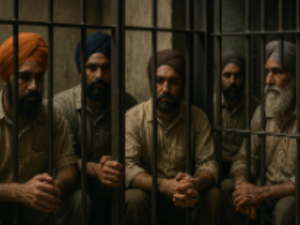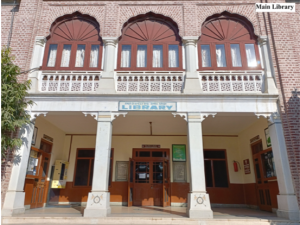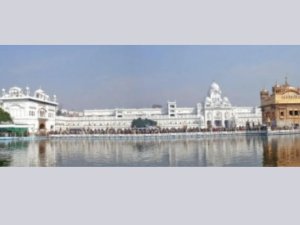Folklore was the conscious and vital source of human existence. People of the ancient nations, tribes and castes preserved this like a bunch of colored blossoms of literature. The word 'Folklore' was coined first of all by William Thomas in 1846. Different writers have given different definitions of folklore. According to G.W. Boswel, the unwritten history of antiques and societies is preserved in the minds of the people and handed down through ages by the medium of languages or practices. Folklore means folk learning. It comprehends all the knowledge that is transmitted by work of months and all crafts and techniques that are learned by initiation or example as well as products of those crafts. Similarly F.R. Leaves define," Out of twenty-one definitions of folklore given in the standard dictionary of folklore, eighteen definitions treat the entire folklore as folk literature". According to Collin Cobuild English language dictionary. "Folklore is the traditional stories, customs, habits etc of a particular community or nation. Folk music, art, custom etc are considered to be traditional or typical of a particular community or nation, representing the culture and emotions of the ordinary people there". Folk literature is broadly divided into two categories viz. prose and poetry, under prose literature comes folktales, legends, proverbs, riddles, folk dramas, anecdotes etc whereas under poetry comes ballads of war and strife, songs, poetic sayings, folk music etc.
In J & K, Punjabi dialects exist inter-mingling with each other with close affinity. These dynamic waves are full of essence in different sub dialects of Punjabi language whether these are Dogari, Pahari, Goojri, Poonchi, Chubali, Pothohari etc. with the passage of time conscious and subconscious ideas flourished among the tribes and races of the world. Drew Fredrick simplifies the correlation with a suitable model.
“Chibali is closely allied to that form of Punjabi which is spoken to west of Jhelum in the country called Pothowar, this later (which the natives of pothwari) I shall speak of as western Punjabi.”
From the early days, Punjabi folk literature enhanced the historical and cultural aspects. In this way invaluable assets of our glory and heritage are conceived in our soil. Rich treasures of folk tales, folk songs, riddles, proverbs and usage. rituals, plays, wall painting, music etc are found abundantly, which would fascinate our future generations.
Folk Tales: - it is another main genre of Punjabi literature which is very popular. This genre is full of entertainment, love, fairy tales, anecdotes, myths, jokes, romantic tales etc. It simply fascinating the folk in its totality and antiquity. The J & K academy of Art, culture and languages brought out half a dozen commendable publications of Punjabi folk tales. These are Sute Hoi Bhag (1977-78), Sarbat Da Bhalla (1979-80) Jandry Wala Sir (1981-85), Panchey Di Niseat (1987-88), Insaf Di Dhakri (1989-90), Mani Wala Sap (1991-92).
Before 1947, the folklore aspect of J&K was negligible. Giani Avtar Singh Shad Published "pahari Gunjan (1954) in which folk- songs from the Poonch area are included. After 1967-98, Hemal, Sheeraza and Sada Sahit published a number of articles on this genre. Some writers have done commendable work in Punjabi folk literature through publications of books viz. Lok Sur De Nal Nal -1984, Poonch Di Lok Dhara -1986, (Dr. B.S. soodan), Poonch Te Punjabi Lok Sahit -1987( Prof. H.S. Khajuria), Lok Geetian Vich Samajik Jivan -1988, Mata Vaishno Devi -1993 (Dr. Sushil Sharma), Punj Punjabi Lok Varian -2002 (Dr. G.S. Gulshan ), Pahari Lok Jivan -1979, Lashian de dher -1972 (Harnam singh dukhya), Jammu Kashmir de Punjabi lok geet -1979-80 (Prof. Sewa Singh), S. Amrik Singh also did some work on folklore in his two publications, the state academy has done a commendable work by publishing three volumes of Jammu Kashmir de Punjabi sahit da itihas.
Folk Songs:- Folk Songs are full of melody with music strings. The words of these songs are attractive, secure, clear, compatible and genuine. There is a long list of folk songs, having a wide spectrum i.e. romantic songs, mystic songs, pastoral lore, season songs, wedding songs, birthday songs, child songs, youth songs, lullabies, songs of fairs and festivals, religious lore etc. According to Ralph V. William," A folk song is neither new nor old, it is like a forest tree with its roots continually putting forth new branches, new bears, new fruits."
From the early days, a rich heritage of customs, legends, traditions and myths are coming from generation to generation. Some songs remind us of the historic paradigm of a particular period in which virtuous and flaws both occur in its true perspective. Folk songs are the autobiography of people. They are the oldest and newest form of a language and a store house of its lore. Folk songs are a stream of the human intellect which flows consciously or unconsciously with the flow of time. With the passage of time, most beautiful folk songs are forgotten. The themes in these songs are love and romance. Heer Ranjha, Mirza Sahiban, Sassi Punnu, Shirin Farhad, Sohniu Mahiwal, Yousaf Zuleikha etc. are a sort of heritage pride of invaluable assets of our folklore. According to Prof. Kirapl Singh Kasel," there is a great difference between written literature and folk literature. In folk literature nobody's name is stuck. It is the common heritage of a nation. The second difference is that it could not survive on written papers but was written in the hearts and on the lips of the people.Folk songs are the outburst of the love source. It is just old honey which sweetens the coming generations. The languages of these songs are simple and clear. In 1979-80, the J & K academy published Punjabi folk songs of the state.
Ballad of War and Strife : - Being the popular genre of Punjabi folklore, these were sung earlier and are seen as crystal clear pieces of wisdom, a ballad is a long song or poem which tells a story in simple language and which often has lines which are repeated at the end of each verse, But Sekhon and Duggal throw more light on this aspects, "from on early times as the emergence of the Punjabi language in the folk tradition, ballads and War of strife have been sung by professional bards for the entertainment of Rajas and Jagirdars as well as gatherings of common people at fairs and on festive occasions like wedding and birthday celebrations. The earliest reference to such ballads is found in the Guru Granth.
In Jammu and Kashmir, Punjabi ballads are categorized into historic, semi-historical and mythological ballads. There are usually three modus operandi for the assortment of ballads i.e. apropos of an incident occurring, apropos of the subject and apropos of historic aspects. But F.G. Child has given a new interpretation of the ballad." If it would be possible to consciously tell a tale as telling itself without the instrumentality of a conscious speaker, the ballad would be such a tale." But here, we shall concentrate on the third aspect.
1. Historic ballads: - In this category, we assemble ballads Like Shamskhan, Kamraz, Brig. Prtam Singh, Major Bahudar Ali, Dadu Jamwal, Suba Jungbazz, Baba Jitoo, Malli Sudan and Mir Dass Chuhwan etc.
2. Semi-historic ballads: - In This Category Comes Ballads of Noori, Tagoo and Raja Huse.
3. Mythological Ballads: - In this section, we consider ballads like Raja Rasalu, Gugga, Bawa Mymel, Lachman Da Yog, Bal Bhawani, Pooran Dhol Patshah, Bada Sidh Goria, Baba Birpa Nath and Baba Bharra. The Punjabi men's heroic deeds are well known in the world, there are abundant ballads of heroes and martyrs in our folk-literature, which reflect the great heritage and glory of our past times.
Riddles :-Riddle is keenly associated with folk literature. From the ancient days, people shared these riddles with their children, when they were exhausted from their day's work. Riddle is therefore a sort of cheap recreation and a sign of extension of knowledge. The dictionary clearly indicates it is a puzzle in which you ask a question that seems to be nonsense and has a clear or amusing answer.
This genera of folk is a sort of touch stone of intellect. In Punjabi language riddles were started by Jang Bejid Afghan (1550) and Budh Singh (1750). with the passage of time, certain riddles achieve new vistas and dimensions. In this era when life is moving very fast, we should preserve the riddles without any further delay.
Proverbs and Usages.Proverbs and usages depict the historic views of their times. The symbolic store was the main aim of these idioms. There are different metaphors of folklore which bear a great impact on songs, stories, riddles, epigrams etc. These proverbs and usages have fantastic and visible impressions on other genres of poetry." Collins dictionary defines it as " A proverb is a short sentence that people often quote and that gives advice or tells you something about human life and problems in general, whereas the usage is the way in which words are actually used in a particular context. especially with regards to their meanings."
These proverbs are fantastic to pierce into the heart, being analytic, separation and visible features of folklore. They depict the historic views of their times. The symbolic store was the main aim of these idioms. They are mainly concerned with people, women folk, agriculture, seasons, animals, habitat etc. In these proverbs social and political life clearly emerges and historic anecdotes are the diverse heritage. We should preserve them without any waste of time.
Folk Games:- These are a sort of recreation and entertainment phase in folk literature. Most games create a niche for the coming generations. It is a sort of correlated lore of interactions, unity and organization fragrance. In our state, the most popular Punjabi games are duel; wrestling, and tipcat. kabaddi (a game of physical strength), touch start, fun and frolic etc.
Folk Music: - From that time immoral music was considered the diet of the soul, which fascinated the generations. Music is a basic step from script talent to the classical pattern. The old instrument of music is still preserved in Sri Pratap Museum Srinagar, the Punjabi musical instruments are small drum, guitar, flute, comber, tabor, tongs, pitchers,, castanet, temblor, drums etc, which are still popular in different pockets of the state.
Folk Wall Paintings: - Folk wall paintings are another folk reflection and contemplation thinking in the genre of literature. In the far-flung and remote pockets of the state there are numerous paintings depicting the different plants, animals, birds especially sparrow, crow, pigeon, horse, lion, cow,kite, rising sun etc. In Punjabi literature, Dr. Wanjara Bedi has compiled and published about a dozen volumes on different genres of folklore. His work is unique in its kind in the twentieth century.
From the aforementioned historic perspective, it is obvious that language is the spectrum of folk literature in J & K but is united by the same spirit of love and devotion, which is a sign of excellence.
